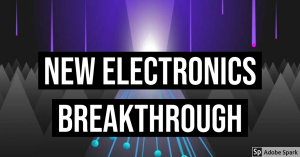If World War I was defined by the machine gun and poison gas, and World War II by the atom, World War III will be defined by the electron and AI, and how to exploit them best for conflict. The nation with the best supertechnology will emerge as the winner, and with the world moving closer to war, it is important to follow major developments in these fields.
A team of Finnish German researchers just released a new development in photovoltaic diode technology with the potential to revolutionize electronics. According to Phys.org, the new diode operates at 130% efficiency, meaning that for every ten protons that comes into the diode, it activates thirteen electrons.
Aalto University researchers have developed a black silicon photodetector that has reached above 130% efficiency. Thus, for the first time, a photovoltaic device has exceeded the 100% limit, which has earlier been considered as the theoretical maximum for external quantum efficiency.
“When we saw the results, we could hardly believe our eyes. Straight away we wanted to verify the results by independent measurements,” says Prof. Hele Savin, head of the Electron Physics research group at Aalto University.
The independent measurements were carried out by the German National Metrology Institute, Physikalisch-Technische Bundesanstalt (PTB), which is known to provide the most accurate and reliable measurement services in Europe.
Head of the PTB Laboratory of Detector Radiometry, Dr. Lutz Werner comments, “After seeing the results, I instantly realized that this is a significant breakthrough—and at the same time, a much-welcomed step forward for us metrologists dreaming of higher sensitivities.”
The secret behind the breakthrough: Unique nanostructures
The external quantum efficiency of a device is 100% when one incoming photon generates one electron to the external circuit. 130% efficiency means that one incoming photon generates approximately 1.3 electrons. (source)
The potential for this technology is multifold, but what is immediately obvious is the effect it would have on all devices that involve sensors, meaning they could become more nuanced, specialized, and capable for many more uses than previously thought. This could have a major impact on robotics and their ability to “perceive” and “solve” problems, such as the “clothes, boots, bike” scene from Terminator 2 when Arnold Schwartzenegger “calculates” the perfect person to beat up and take his clothes from in the “bar scene”.
It may not seem like a major development, but it is often small things such as this which are a precursor to or a piece with other parts that result it major technological advances.



